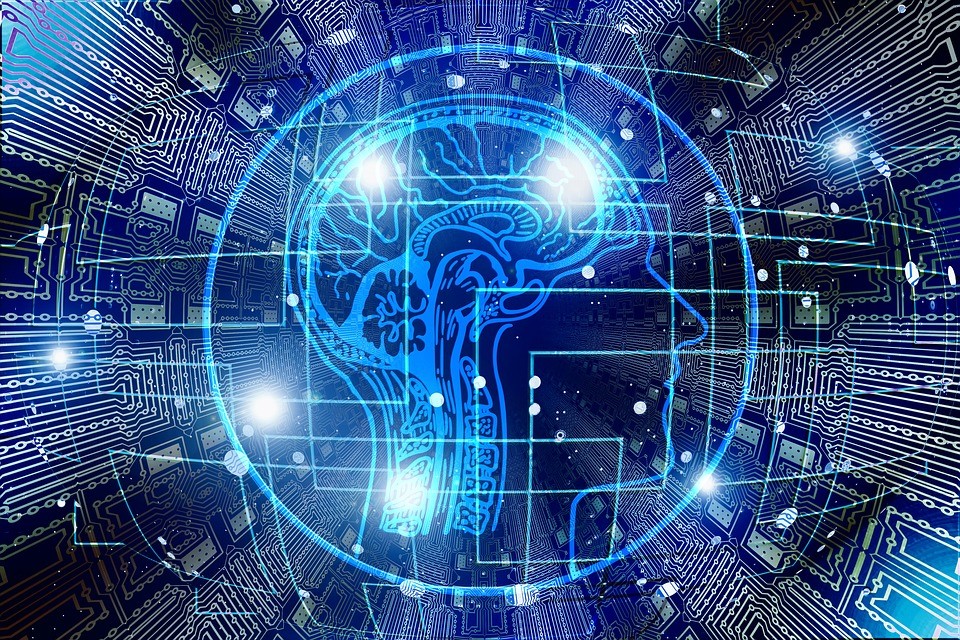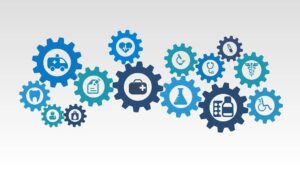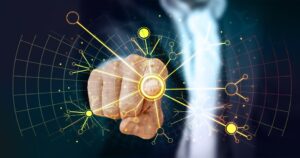Artificial Intelligence (AI) in Healthcare: Can you hear the footsteps of Innovation?

In any industry, if you listen carefully enough, you will hear the footsteps of innovation gathering speed. For the traditionalists among us, these footsteps are scary. They (the traditionalists) run hoping to create a distance between themselves and progress. As the momentum of innovation gathers pace, the footsteps get louder and harder and harder to ignore. Do we run away, or embrace it?
Human beings have always had a fascination with what would happen if inanimate objects had a mind of their own. Recent examples of this fascination can be found in the Transformer’s film series where robots make independent decisions to protect or harm humans, or the tree superhero in Guardians of the Galaxy. Taking a ride back through history, we can see an equal fascination in Mary Shelly’s Frankenstein or the Golem of ancient Jewish folklore. These characters are shaped by imagination and given forces representing opposing sides, the good, and the bad.
Artificial Intelligence good, bad, or somewhere wedged in between
Nurses and physicians have enormous workloads. A recent study confirms just how much time routine tasks such as paperwork can take. The average doctor spends 8.7 hours per week on administrative tasks such as paperwork; psychiatrists spend the most hours on administrative-related duties (20.3%), followed by family / general practitioners, and internists (17.3%).
For busy medical professionals, Artificial Intelligence (AI) can administer more automated tasks such as EHR documentation, and even triage CAT scans, enabling physicians and other medical professionals to focus on more complex patient needs. Artificial Intelligence is also able to accomplish tasks that are not in human beings’ capacity. Machine Learning technology synthesizes a mass of raw data from multiple sources into easily distinguishable color-coded risk categories.
As much as AI solutions benefit medical teams, they also have advantages when used in tandem with existing technology such as telemedicine.
Telemedicine is bringing healthcare services to rural communities, connecting patients living on the outskirts of towns and cities with leading healthcare providers. Research shows that telemedicine dramatically decreases the need for specialists, waiting times, and reduces high readmission rates. Telemedicine’s ongoing growth and development enables providers to monitor patients whether they are at home or in a clinical setting.
A great example of the power of AI happened at Virtua Memorial Hospital. The hospital set up a rules-based analytics engine to monitor patients that were at risk for post-op respiratory depression. The analytics engine used specific criteria and filters to send alerts to providers. It effectively pinpointed all the at-risk patients helping to reduce false alarms by more than 90%.
Artificial Intelligence within Radiology
As the continuing shift of machine learning and AI technology gains prominence within radiology, some in the industry fear that it will replace human practitioners. There is a basis for this fear. Jennifer Bresnick, writing for Healthanalytics.com sites research showing Artificial Intelligence algorithms scored higher than humans did on “written tests on diagnostics used to certify physicians in the United Kingdom.” (https://healthitanalytics.com/news/arguing-the-pros-and-cons-of-artificial-intelligence-in-healthcare by Jennifer Bresnick) However, the pluses of AI outweigh the negatives, so there is no reason for fear.
Whitney J. Palmer writing for Modernmedicinenetwork.com discusses some of the latest developments in Machine Learning and Artificial Intelligence. They offer a range of exciting applications for MRI, PET, CT, and Nuclear Medicine, and most recently in Ultrasound. The newest features are radically improving image quality. These AI tools enhance both the spatial detail and quality of imaging. Both radiologists and patients benefit. For the physician, high-quality imaging allows them to make more accurate and timely diagnoses, for patients, the scans take less time and there is less exposure to high doses of radiation. Researchers are now looking at how to build diagnostic sensitivity and specification into these technologies.
How Artificial Intelligence affects Dermatology
Many use the term Artificial Intelligence interchangeably with Machine Learning or Augmented Intelligence. Each of them plays different roles in patient care.
Machine Learning is a subsect of AI. It involves large computational networks that learn through trial and error, taking feedback, and then making necessary adjustments. Much of Dermatology data is image-based. Technicians train machine learning algorithms to distinguish specific features leading to systems making an actual diagnosis. The more learning or data fed into machine learning technologies, the more effective they are at isolating nuances. Eventually, the machine learning devices learn how to ignore variability between images and zero in on ‘true diagnostic’ features. Dermatologists use machine learning as a powerful diagnostic tool for skin cancers such as melanoma.
Augmented Intelligence focuses on cognitive technologies, more of an assistive role in enhancing human intelligence rather than supplanting it. It is more about how technology can help us to be smarter and faster with tasks and give us more profound insights.
Research shows that Machine Learning and Artificial Intelligence have the potential to diagnose melanoma to the same accuracy level of trained dermatologists. However, Dr. Art Papier, CEO of VisualDx, warns that technologies need improved efficacy to become an established tool in dermatology practices and other specialties. The question for dermatologists and the legal field is; if machine learning is used to diagnose melanoma, and an error is made who is responsible, the technology or the physician?
Artificial Intelligence is creating a revolution that will shape the future of healthcare
In many Sci-Fi films and books, the topic of fascination has always been what would happen if machines eventually take over the role of human beings. Research demonstrates that Artificial Intelligence and Machine Learning have come a long way and are making significant strides. We should not pull the blanket over our head in fear or ignorance. Artificial Intelligence is here. We have a choice to embrace it or not.
The only thing scary about Artificial Intelligence is it’s potential. Research has shown how it can help medical professionals focus on what matters, their patients. Artificial Intelligence devices perform routine tasks at more than twice the speed. They can also manage large chunks of data and make it understandable to us mere humans.
In the radiologist space, it can enhance the accuracy of a scan, the speed, and the quality enabling improved diagnosis. It is also becoming a more widely accepted tool in dermatology with the ability to isolate and accurately diagnose various types of skin ailments.
In short, Artificial Intelligence transforms dreams, and imagination into tangible reality! The message is don’t run from the future but embrace AI!
We at Merraine embrace change and keep updated with the latest trends. We would love to hear how you have implemented AI or Machine Learning within your hospital or medical practice. Feel free to share your experiences below.


